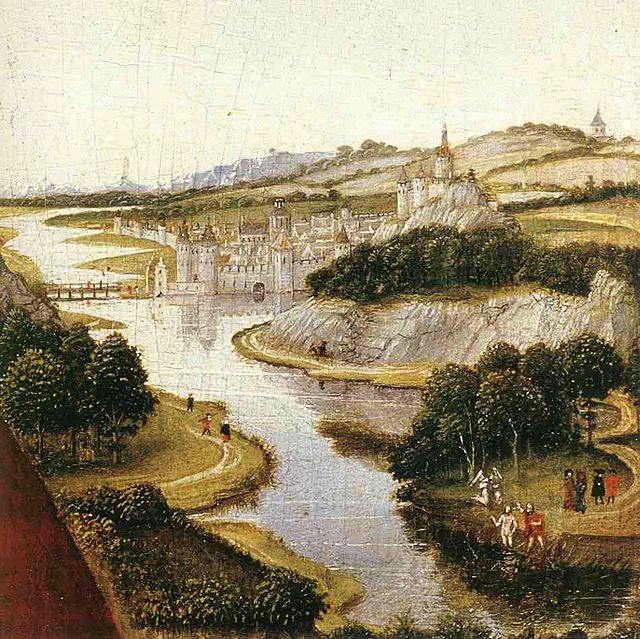The Braque Triptych is a c. 1452 oil-on-oak altarpiece by the Early Netherlandish painter Rogier van der Weyden. When open, its three half-length panels reveal, from left to right, John the Baptist, The Virgin Mary with Jesus and Saint John the Evangelist, and on the right, Mary Magdalene. When the wings are closed, the work shows a vanitas motif of a skull and cross.
Interior panels of the Braque Triptych. c. 1452. Oil on oak panels with frame, 41cm × 34.5cm; 41cm× 68cm; 41cm × 34.5cm. Musée du Louvre, Paris.
The outer panels shown folded. The skull is likely intended as both a memento mori and a memorial for the patron.
Detail of the landscape behind John the Baptist. As with the disembodied text, the landscape segues across the panel to form a continuous whole.
Detail, Mary, center panel
Rogier van der Weyden or Roger de la Pasture was an early Netherlandish painter whose surviving works consist mainly of religious triptychs, altarpieces, and commissioned single and diptych portraits. He was highly successful in his lifetime; his paintings were exported to Italy and Spain, and he received commissions from, amongst others, Philip the Good, Netherlandish nobility, and foreign princes. By the latter half of the 15th century, he had eclipsed Jan van Eyck in popularity. However his fame lasted only until the 17th century, and largely due to changing taste, he was almost totally forgotten by the mid-18th century. His reputation was slowly rebuilt during the 200 years that followed; today he is known, with Robert Campin and van Eyck, as the third of the three great Early Flemish artists, and widely as the most influential Northern painter of the 15th century.
Rogier van der Weyden
Imaginative portrait by Cornelis Cort, 1572
The Descent from the Cross (c. 1435), oil on oak panel, 220 × 262 cm. Museo del Prado, Madrid
Portrait of a Woman with a Winged Bonnet, c. 1440. Gemäldegalerie, Berlin.








